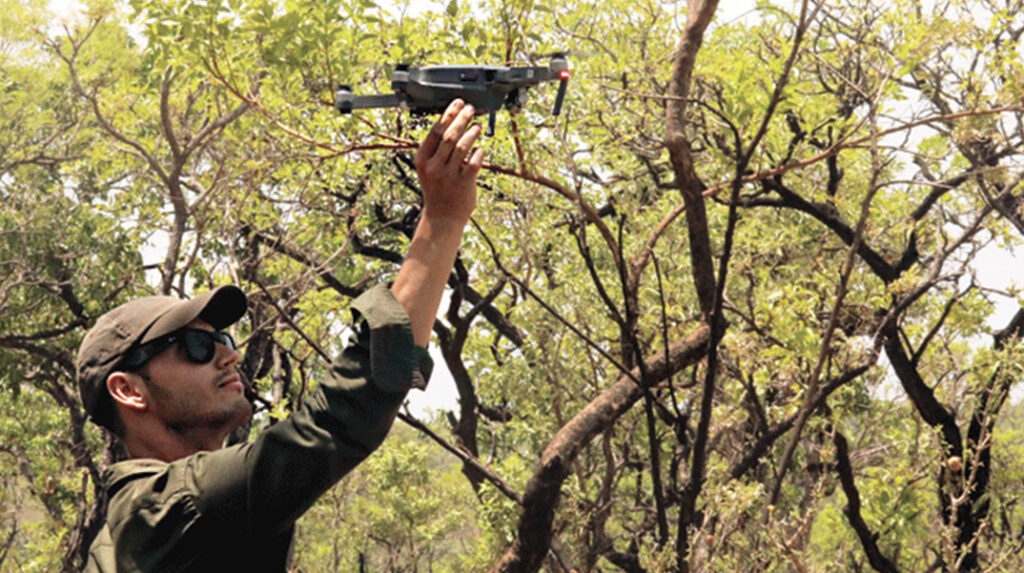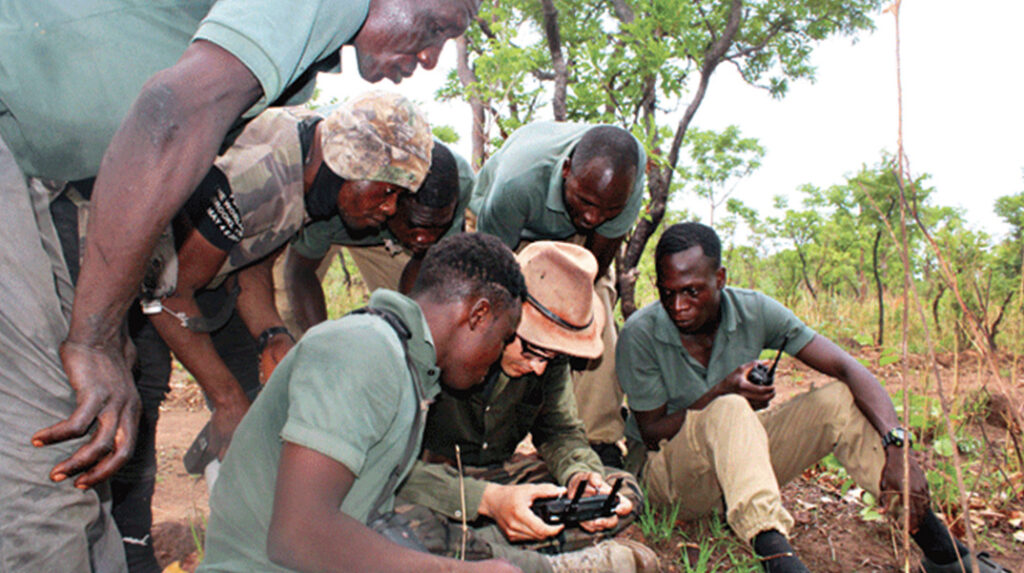Wildlife Conservation
Digitalization of Anti-Poaching


Poachers, gold seekers, woodcutters, cattle herders and illegal fishermen all share one thing in common. When they spot our anti-poaching units, they immediately run! The dense biotope, the uneven ground caused by the bioturbation of the worms, their perfect knowledge of environment and sometimes the careful organization of the criminals, make apprehensions difficult, and sometimes hazardous. Not to mention the fact that these illegal actors are increasingly operating in the middle of the night. It’s not unusual for one or more individuals in a group to elude us, or for the information we gather in situ not to allow us to intervene in complete safety.
We have therefore tried out several new strategies using technology.
The first involved setting up discreet, virtually invisible trail cameras on strategic passageways. The photos thus captured have enabled us to identify certain intruders. Close collaboration with local authorities enables us to apprehend criminals directly in their villages, when they least expect it.
In addition, the use of drones has enabled us to film gold seekers in flagrante delicto, and by aerial pursuit to push these individuals towards our anti-poaching teams in ambush, or to scare away a herd of elephants threatened by a group of heavily armed poachers.
From now on, our anti-poaching teams carry cameras, when possible, to secure the image discreetly, before carrying out their work.
We are neither sufficiently equipped nor sworn to react against heavily armed organized gangs. Nevertheless, the digital tool enables us to intervene, while preserving the integrity of the entire team.
Deploying these devices on a large scale, and across all territories, would enable us to increase the effectiveness of our surveillance activities. To maximize results, we also hope to equip protected areas as soon as possible with thermal drones & binoculars, which are formidable pieces of equipment for night-time operations, ensuring the safety of intervention brigades, for example, by pinpointing the exact number of intruders and their equipment (weapons or other), before proceeding to arrests.
We are also looking into the possibility of using connected technologies such as GPS SMART, GARMIN INREACH or other cellphone signal detection technologies, to collect and centralize digital data from the field, which we could then analyze and convert into statistics, which is the only language understood by international NGOs, major institutions such as the European Commission, and financial backers.


Suggested Articles:


18th December 2022 | in Wildlife Conservation | by Xavier Vannier
THE NORTHERN LION IN IMMEDIATE DANGER
The Northern lion, Panthera leo leo, is in immediate danger of extinction in Cameroon and across the rest of their range. In 2023, it is estimated that there is less than 400 West African lions left in the wild…

6th November 2022 | in Hunting Chronicles | by Xavier Vannier
AQUATIC CHASE

26th October 2022 | in Wildlife Conservation | by Xavier Vannier
WILDLIFE CONSERVATION IS A NEED
We have been descending the Ndugba river bed for more than 5 hours. The heat is unbearable and my body starts to cry out for mercy. My feet hurt, my legs, although hardened, support me only with difficulty…


